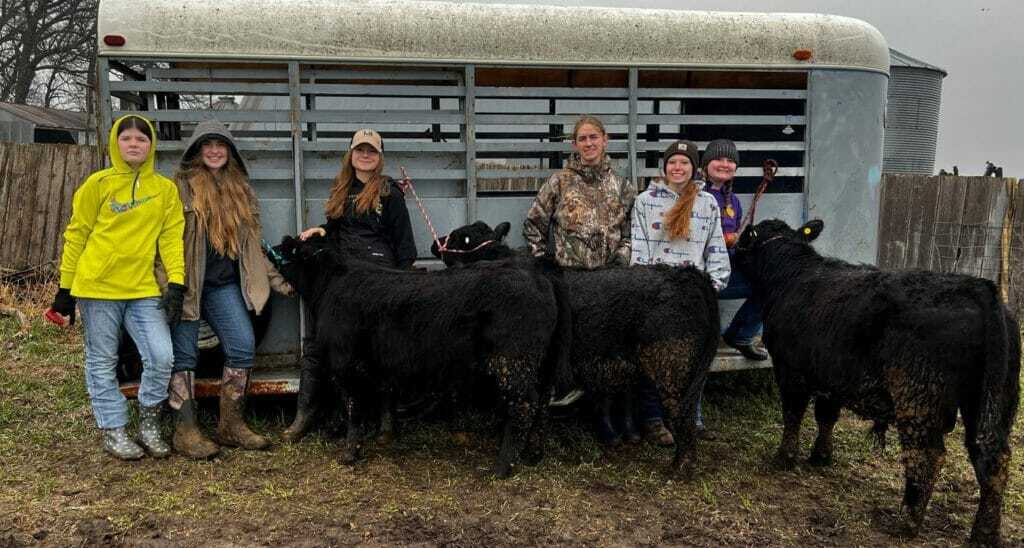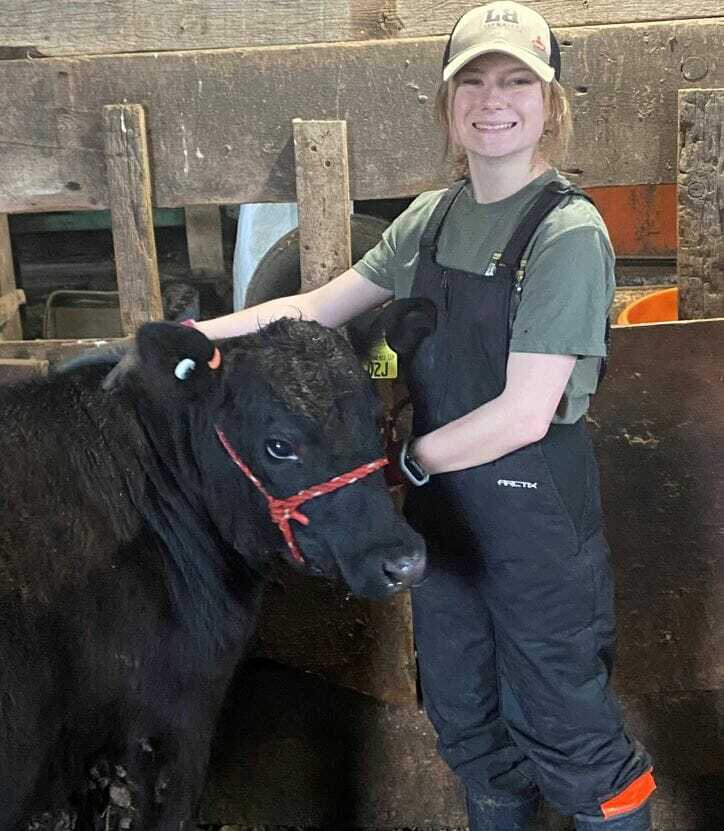Unique Partnership Allows FFA Members to Learn the Ropes of Beef Production
Think you can’t have a beef project because you don’t live on a farm? Think again!
Fewer than 25 percent of members of the Clear Lake FFA in Iowa have a rural background, but that’s not stopping a determined group of young women from learning the ropes.
“People in the cattle industry don’t carry your bag around, but they’re more than willing to lend a helping hand and share advice as long as you’re coachable,” says Emma Pingel, who traded in her competitive dancing shoes for cowboy boots. “My dad showed cattle when he was growing up, but my parents moved to town when I was four years old. I’ve always wanted to show cattle, and now I have the opportunity.”
Thanks to former Iowa Falls FFA advisor Doug Dodd, these seven Clear Lake FFA members are getting experience raising and showing cattle:
- Emma Pingel, senior, who also served as Clear Lake FFA Chapter President 2021-2022 and North Central District Vice President 2021-2022
- Haley Jackson, senior
- Olivia Orchard, junior
- Emma Behrends, junior
- Kjersten Ouverson, junior
- Emery Hippen, sophomore
- Jocelyn Orchard, sixth grade
Dodd used to be a full-time ag teacher. Although he works for Titan Pro now, he sometimes serves as a substitute ag teacher in Clear Lake. A cattle producer, Dodd offered this opportunity for a beef SAE to anyone who was interested. Because he owns the cattle, he purchases the feed. Kjersten Ouverson’s family is providing facilities for the cattle. Clear Lake FFA and/or 4-H members provide the labor.
The hours students spend doing cattle chores either go toward their 4-H Beef Project, FFA Supervised Agricultural Experience (SAE) or earning an FFA degree. Each student has a set time and day of the week that she is responsible for doing chores. If her schedule changes, it’s her responsibility to switch chore times with another member. Mr. Dodd, who regularly chores on Wednesday and Sunday nights, also is willing to pick up an extra shift when needed.
After picking up their cattle in November and December, the FFA members began working to tame their stock.
“You’re not going to get up at 5:30 a.m. to do chores before school or come out here when its freezing cold unless you love it,” says Haley.
These FFA members have spent a minimum of one day per week, often on Saturdays, working with their cattle and grooming them. Once the school year ends, they will work with them more often. These calves will be broke to lead by the time they enter the ring of the North Iowa Fair in August.
“You learn a lot of patience. You can’t rush building trust,” says Jocelyn, who is in her second year of an FFA beef project. She says her second year of working with cattle is easier because she is more experienced and has gained confidence. She’s also enjoying the comradery with her fellow chapter members who are keeping their projects on the same farm.
With experience comes bigger goals. This group of young women visited with me about changes they would like to make to the barn. They would like to create a supply room in another area of the barn, which would create more space for their cattle to come in out of the weather. They made a few minor changes this year when they cleaned out a side of the barn that had been unused for quite some time.
Emma earned her welding certificate last spring and Haley earned hers this year, so they have worked on a few gates and welded some pins. Haley plans to major in Building Trades next fall at North Iowa Area Community College (NIACC) where she is certain to gain even more skills that will be invaluable on the farm.
Filling a Niche with Aberdeen Breed
Aberdeen, formerly called Lowlines, were developed from an Australian government program with Aberdeen Angus from Canada. They boast a 30 percent larger ribeye per pound of body weight. Mr. Dodd says he expects his Aberdeen steers to have an 11- to 11.5-inch ribeye at 800 to 850 pounds of live weight.
“The Aberdeen meat is tender, high quality and lower cost due to less inputs and smaller carcasses,” explains Mr. Dodd.
Aberdeen have become very popular with those who own small acreages and market beef directly.
“Due to their smaller size, an Aberdeen herd requires less feed, land and equipment to produce high quality cuts,” adds Dodd. “This breed is very docile and are easy calvers. You can cross them. Half-bloods are very popular to pull down frame scores on commercial cows, and many fullblood bulls are used in purebred herds for heifers having their first calves.”
Celebrating May Beef Month
Not only is beef delicious, it is nutritious. One serving of beef, which is three ounces or about the size of an iPhone, provides our bodies with nearly half of its needed protein plus 10 essential nutrients including zinc, iron, protein (ZIP) and B vitamins.
A moderate increase in dietary protein combined with physical activity can help a person manage weight by increasing heat produced in the body, which helps a person feel full longer, prolongs energy expenditure, helping maintain lean muscle mass and improves metabolism.
In celebration of May Beef Month, today we’re sharing a recipe that is popular with teens and is versatile enough to be served at graduation receptions for tacos and loaded nachos.


